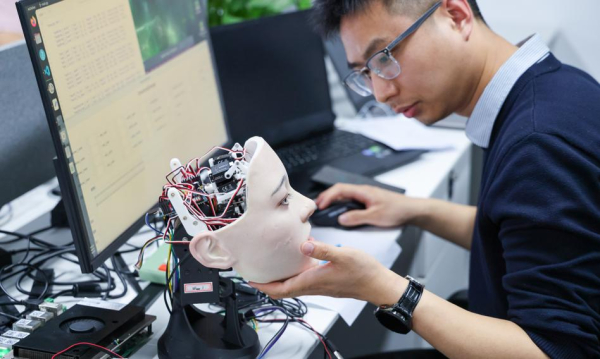By 2030, 30 percent of current professions could be replaced by algorithms and robots, with professions involving manual document processing, accounting, customer service and data analysis particularly at risk, according to a report by ING-owned SAIO, a company that creates business robots that combine automation and AI.

The report also indicated that, on the other hand, the growing importance of AI will create new jobs, and the demand for artificial intelligence specialists, data analysts and cybersecurity experts could increase by 50 percent over the next decade.
“Generative AI can already generate content, analyze data and support business decisions. As a result, work in positions such as finance specialists, analysts, lawyers or programmers will soon undergo even more significant changes. AI is able to take over tedious tasks, and employees can then focus on more strategic aspects of their work,” said Jacek Tochowicz, principal expert at SAIO, quoted in the release.
At the same time, according to SAIO, automation opens doors to new professions. In the future, the job market will need, among others, AI ethics specialists who will take care of the foundations of decisions made by algorithms, as well as experts dealing with legal regulations regarding technology, such as the AI Act or data processing and storage in the context of artificial intelligence.
The report estimates that the technological, ethical and regulatory context surrounding AI technologies will constitute a large, emerging job market.
According to SAIO, the demand for AI engineers, data analysts and IT infrastructure management specialists will also increase.
As reported, according to Everest Group and SAIO specialists, the application of generative AI is currently most advanced in customer service departments (32%) and IT operations (30%), as well as in sales and marketing departments (18%). These applications include, among others, automation of contact with the customer after the conversation, customer self-service, content generation, personalization of marketing content and management of access to knowledge and information in customer service.
According to data from the ING and European Economic Congress report, Poland is still struggling with a shortage of investment in digitalisation and automation, which is one of the main barriers to economic growth.
In 2023, the investment rate in Poland was only 17.8 percent of GDP, while the average for EU countries was 22.2 percent, and in the Czech Republic as much as 27 percent. Companies operating in Poland indicate that the key barriers to investing in automation are regulatory instability and high financing costs. (PAP Biznes)
mcb/ hot/






